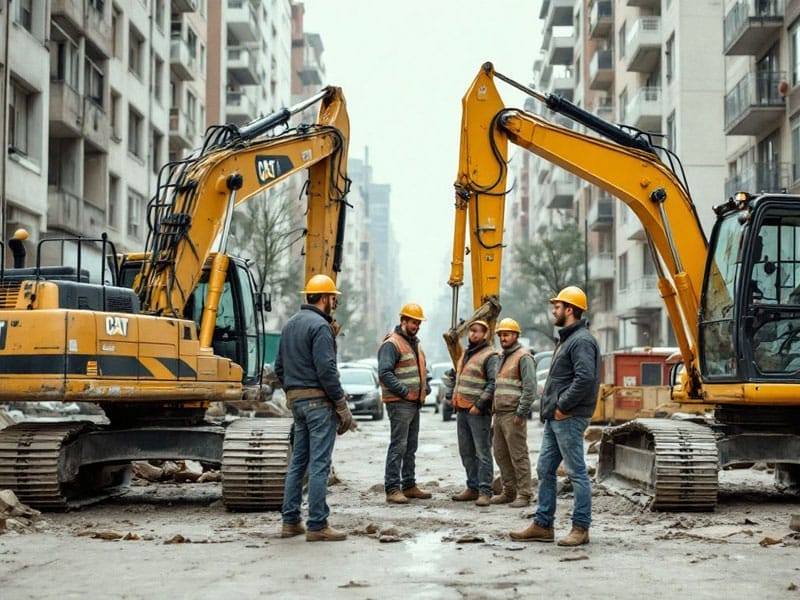
The Complete Guide To High-Reach Vs. Standard Vs. Mini Excavators For Demolition
Tearing down buildings in busy city areas can be tricky.
You need the right excavator, whether a high-reach, standard, or mini model.
Each type has its strengths, and knowing these can save time and money.
This guide will help you determine which one fits your demolition needs best!
Note that we are a licensed contractor with excavators of different sizes to fit any excavation project you might have.
Key Takeaways
- High-reach excavators are ideal for tall buildings. Their long arms reach over 100 feet and handle top-down demolition safely. They reduce debris risks and operator exposure in urban areas.
- Standard excavators provide balanced power for digging, material handling, and residential jobs. They also easily adapt to various attachments, such as buckets or hydraulic breakers.
- Mini excavators work best in tight spaces, such as small backyards or alleys. Their compact size allows for easy transport, low ground damage, and precise control near structures.
- Equipment rental is cost-effective for short projects. It avoids the high upfront costs of buying ($100K—$500K) and reduces storage fees.
- Transporting mini excavators is easier than larger machines. A garage can store a mini-unit, while standard or high-reach models need outdoor space with protection.
Key Features of High-Reach Excavators
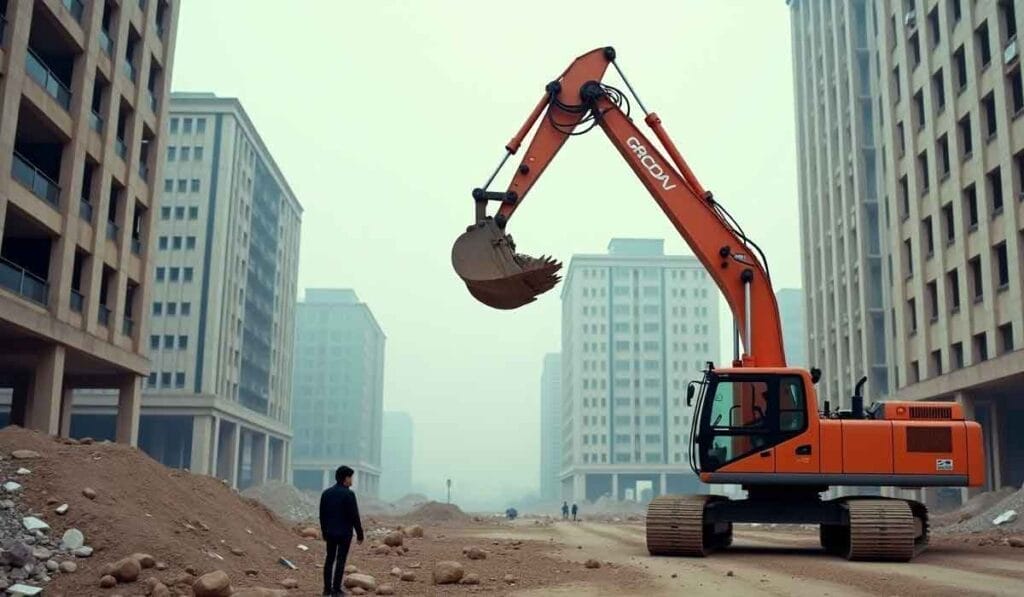
High-reach excavators are perfect for tall buildings.
They have long arms that help handle hard-to-reach spots during demolition.
Extended reach capabilities
Extended-reach excavators handle tall buildings with precision.
These machines can stretch their arms far, reaching heights over 100 feet.
They make pulling down structures from the top easy, controlling heavy debris.
This urban demolition option saves time and reduces risks.
The long arm keeps operators safe at a distance while maintaining strong digging depth and lifting power.
It’s ideal for large excavators tackling jobs in tight spaces like city areas.
Designed for top-down demolition
High-reach excavators are ideal for breaking structures from the top down.
They use long arms to dismantle tall buildings safely and efficiently.
Their bucket capacity and heavy-duty attachments help easily handle debris during urban construction.
These machines reduce risks by keeping operators safe from falling material.
Compact excavators or smaller options can’t match their reach, making them perfect for demolishing large structures like warehouses or old apartments in tight spaces.
Key Features of Standard Excavators
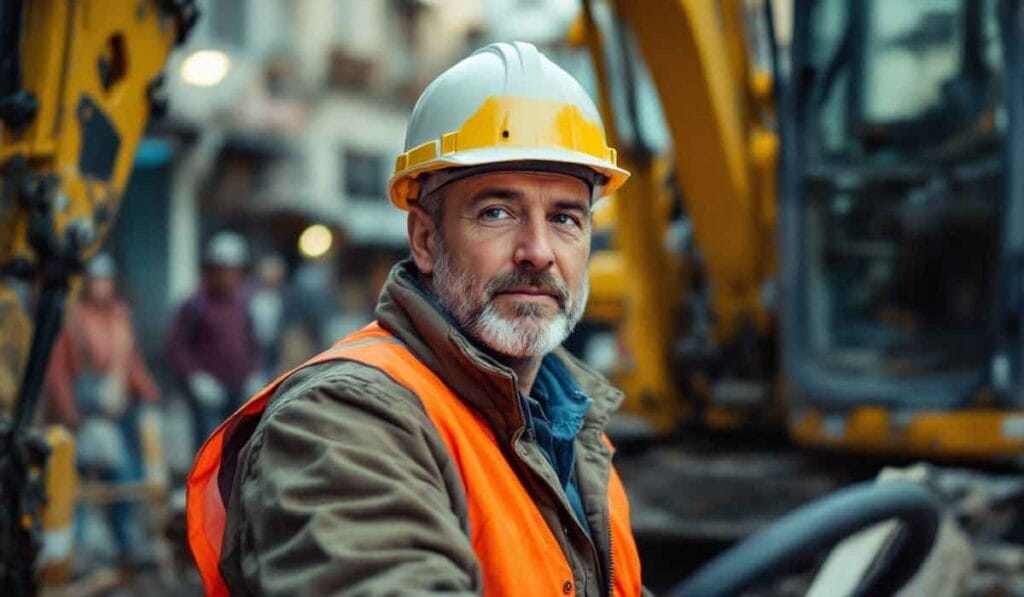
Standard excavators offer strong power for heavy-duty tasks.
Their flexible design makes them suitable for digging trenches, scooping dirt, and handling various materials in urban construction jobs.
Balanced power and versatility
Standard excavators offer a mix of strength and flexibility.
They easily handle heavy-duty tasks like digging trenches or scooping dirt.
Their balanced power makes them great for material handling and residential construction.
These machines adapt well to various excavator attachments, giving you more job options.
With standard-sized excavators, you get reliable performance across urban construction projects.
They provide enough lifting capacity without being too large for compact areas.
Whether working on landscaping projects or managing excavation in tight spaces, these diggers deliver efficient results every time while keeping fuel efficiency in check.
Suitable for a wide range of tasks
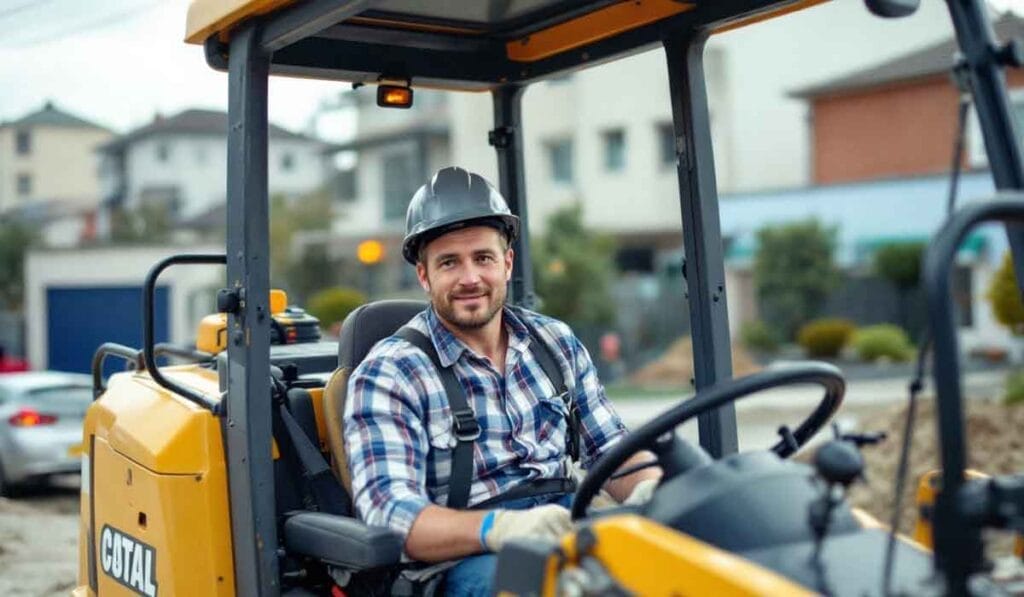
Standard excavators offer flexibility.
They can be used for landscaping projects, trenching, or material handling.
They are suitable for both residential construction and heavy-duty tasks like structural demolition.
Most models support a variety of work tool attachments, including buckets, grapples, and hydraulic breakers, to match your needs.
They balance power with ease of use, making them perfect for confined spaces or larger urban construction areas.
“Standard excavators are reliable tools that adapt effortlessly to various challenges.”
Key Features of Mini Excavators
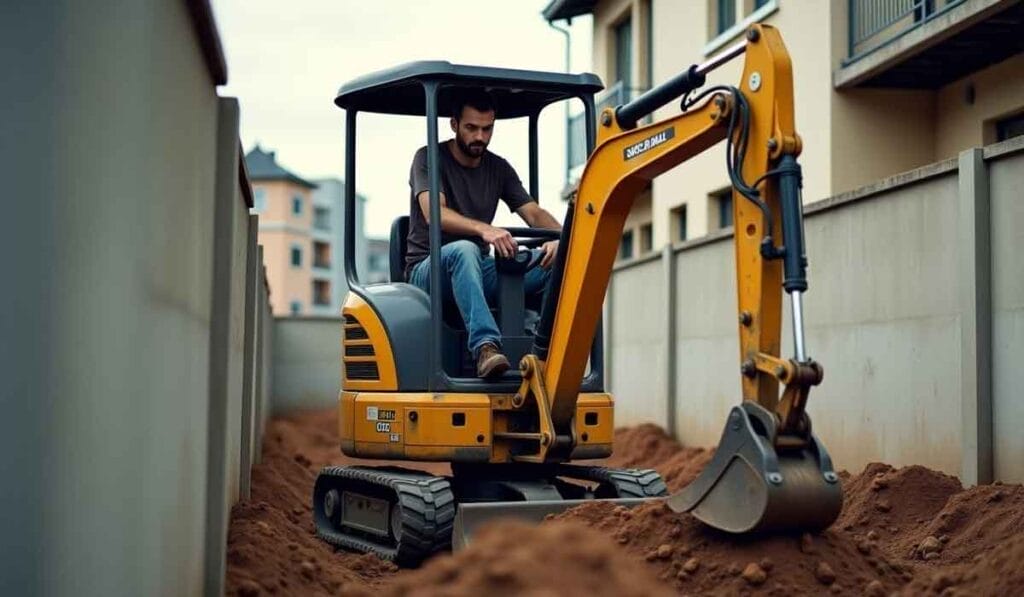
Mini excavators are perfect for tight areas where bigger machines can’t fit.
Their small size and easy handling make them great for urban construction or residential jobs.
Compact size for tight spaces
Compact excavators can easily fit where larger machines can’t.
You can work efficiently in confined spaces, like narrow alleys or small backyards.
These machines are perfect for residential construction and landscaping projects that need precision.
Their lightweight design reduces ground damage, making them ideal for delicate areas like turf or pavement.
With zero tail swing, you get better mobility around obstacles, making material handling easier, even in tight spots.
Easy to transport and store due to their size, they save both time and storage space costs.
Enhanced maneuverability
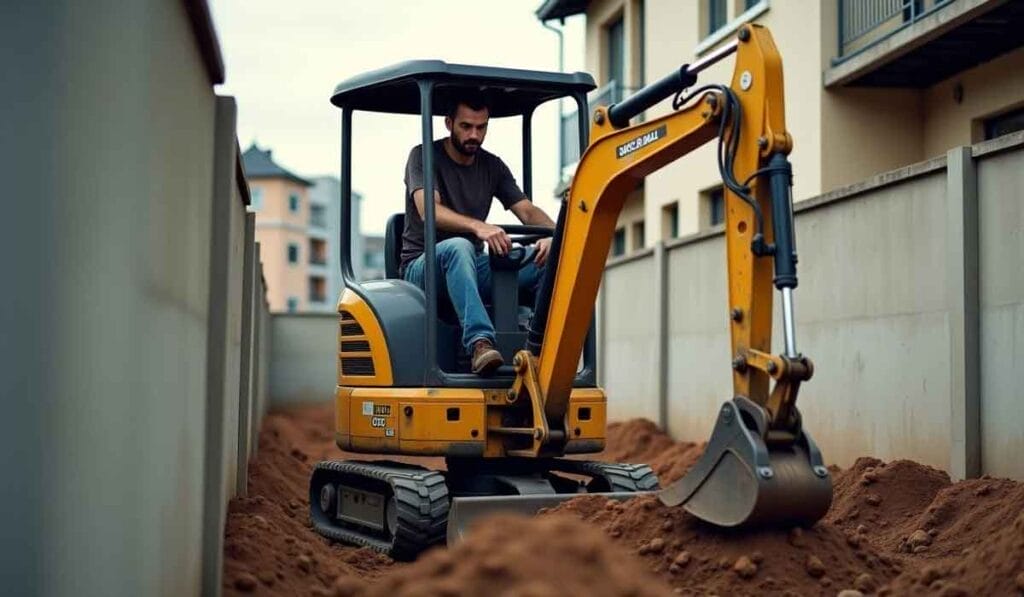
Mini excavators are perfect for tight spaces in urban construction.
Their zero tail swing means you can work near walls, fences, or buildings without worrying about damage.
These compact machines allow precise control even in confined areas.
With advanced controls and small sizes, you can easily handle various tasks like landscaping projects or material handling.
They deliver smooth movement and fuel efficiency while reducing downtime during urban demolition.
Comparing Performance for Urban Demolition
Urban demolition needs the right equipment for tight places and towering structures.
Each excavator type offers unique strength, speed, and control for specific jobs.
Efficiency in confined spaces
Mini excavators excel in tight spaces.
Their compact size allows them to maneuver around obstacles easily, making them perfect for residential construction or landscaping projects with limited room.
Zero tail swing designs help prevent bumping into walls, fences, or nearby structures.
Their small footprint ensures less ground damage on soft surfaces like lawns.
Excavator attachments boost versatility, letting you perform tasks like digging and material handling without needing multiple machines.
If you’re working in confined spaces, mini excavators keep the job smooth and efficient while saving time and effort.
Power and reach for structural demolition
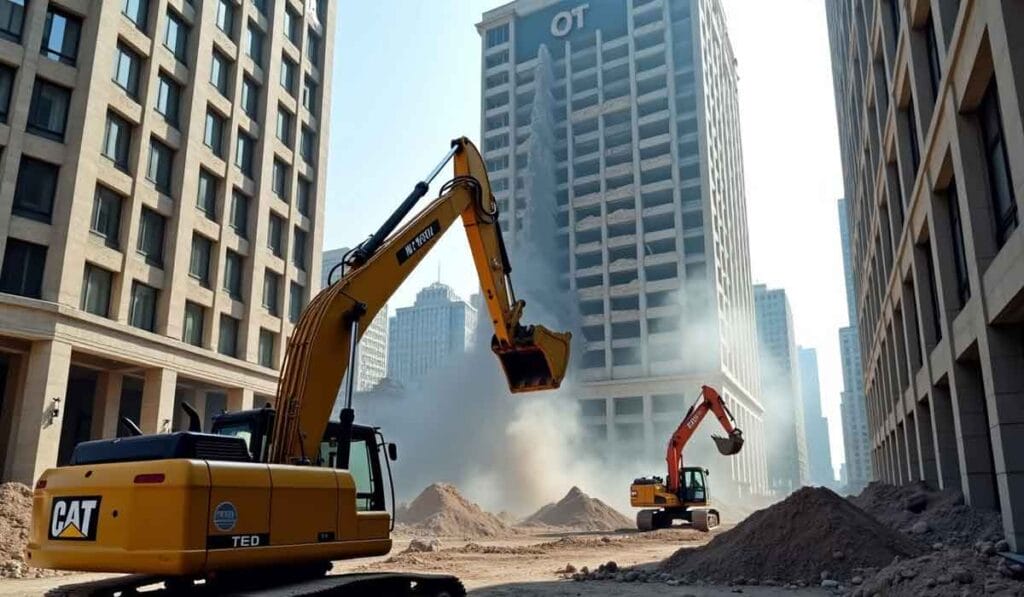
High-reach excavators offer unmatched power for demolishing tall structures.
Their extended arms and strong lifting capacity make them perfect for tearing down buildings from top to bottom.
These machines reduce the need for scaffolding, reducing risks and costs.
Standard-sized excavators provide balanced force and adaptability.
While they lack the reach of larger models, their breakout force is excellent for mid-level demolition tasks.
With the right excavator attachments, you can easily handle heavy-duty jobs or focus on detailed material handling.
Safety Considerations
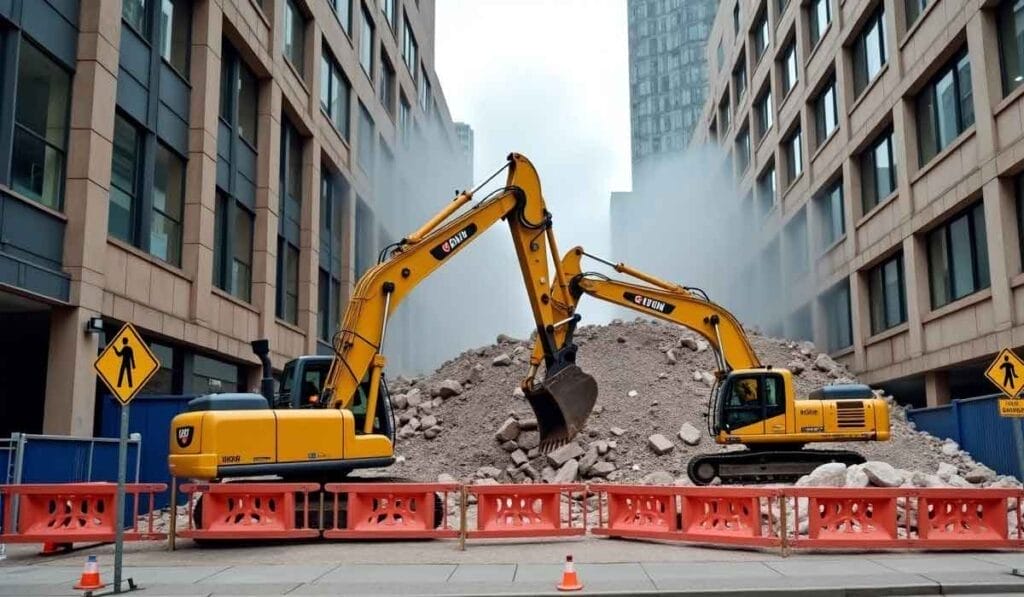
Safety should always come first in urban demolition.
Focus on stable equipment, proper training, and limiting debris risks in crowded areas.
Stability and operator safety
A stable machine prevents tipping and accidents. Mini excavators are lightweight and handle tight spaces well but need careful operation to avoid imbalance.
Standard excavators offer better weight distribution, which helps on uneven terrain during residential construction or landscaping projects.
High-reach excavators must stay balanced when working at height.
Their outriggers improve stability while reducing the risk of falling debris in urban construction zones.
Always inspect the equipment before use, including dozer blades, for extra safety during heavy-duty tasks or material handling jobs.
Reducing debris scatter in urban areas
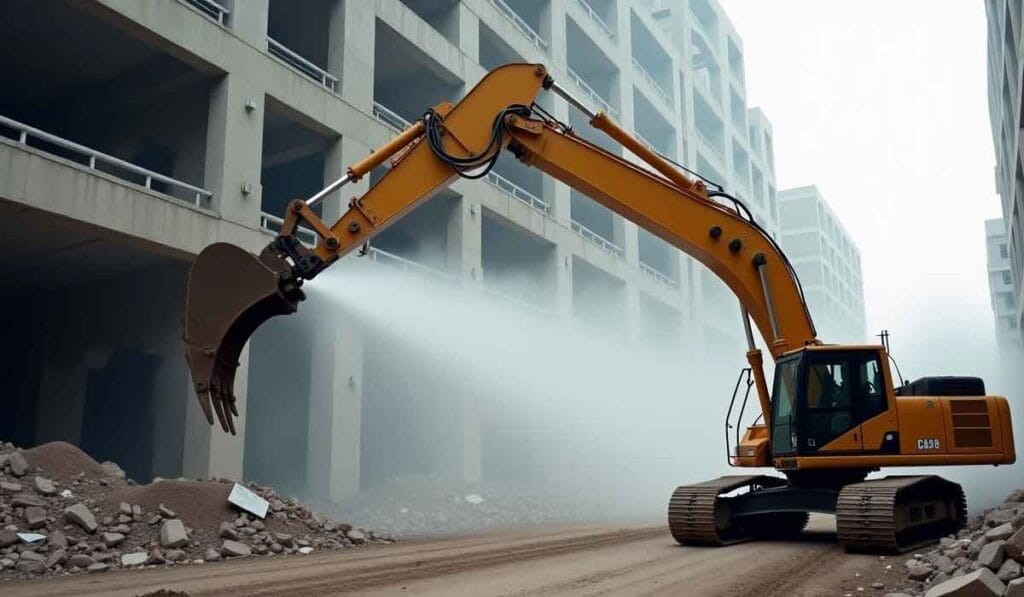
Control debris with the right excavator attachments.
Attachments like hydraulic breakers and grapples help manage material handling efficiently.
Water mist systems on high-reach or standard-sized excavators reduce airborne dust during demolition.
Properly planned heavy machinery placement minimizes rubble scatter near residential construction zones.
Always prioritize safety to keep surrounding areas clean and secure in urban construction projects.
Cost and Accessibility
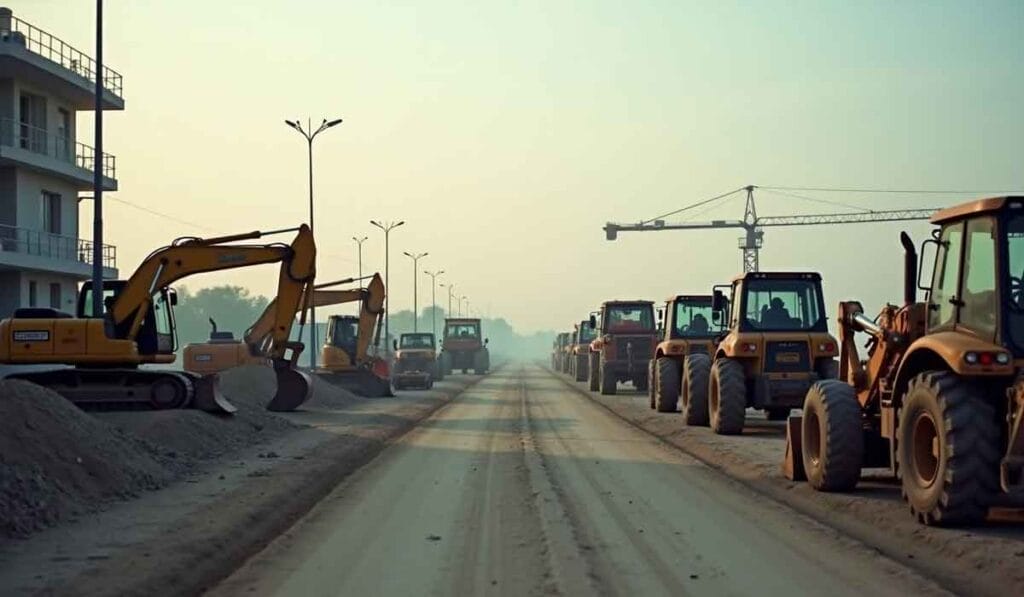
Owning heavy equipment like excavators can be costly, especially for smaller projects.
Equipment rental offers a flexible option, saving money on maintenance and storage needs.
Equipment purchase vs. rental costs
Buying heavy equipment like excavators can be expensive upfront.
Depending on features and weight class, a standard excavator could range from $100,000 to over $500,000.
Mini excavators are cheaper but still require high maintenance costs in the long term.
Renting offers flexibility for short projects or tight budgets.
With rentals, you avoid storage fees and regular maintenance tasks.
Many rental companies include insurance, making them safer for urban construction projects.
Choose based on task length and frequency of use.
Renting might save money for one-time jobs like residential construction or landscaping projects.
Transportation and storage requirements
Transporting excavators requires planning.
Mini excavators are easier to move due to their smaller size and lighter weight.
A pickup truck or small trailer can typically handle a compact excavator.
Standard and large excavators, though, need heavy-duty trucks or specialized trailers for safe transport.
Storage depends on the size of the machine.
A mini excavator fits in tight spaces like garages or sheds, while larger units may need outdoor storage with protection from weather damage.
Proper storage reduces maintenance costs and extends the life of your equipment.
Conclusion
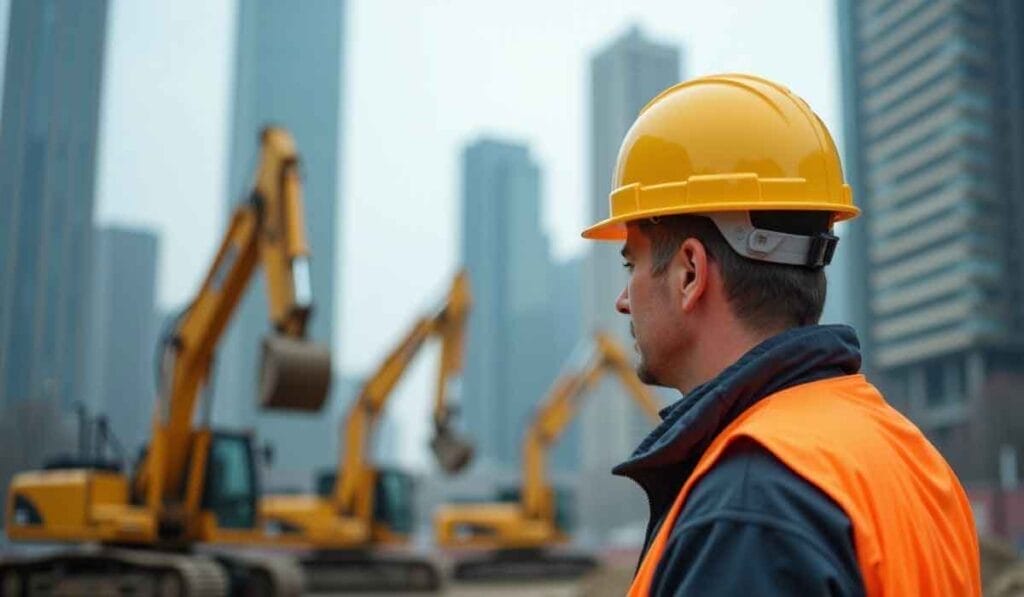
Choosing the right excavator depends on your project.
High-reach models are best for tall structures, while standard ones easily handle various tasks.
Mini excavators shine in tight spaces and urban areas.
Before deciding, consider power, size, and cost.
The right machine makes demolition safer and more efficient every time.
FAQs
1. What are the main differences between high-reach, standard, and mini excavators for urban demolition?
High-reach excavators are ideal for tall structures and heavy-duty tasks like material handling in urban construction. Standard excavators balance power and versatility for residential construction and medium-scale projects. Mini or compact excavators excel in confined spaces or tight areas due to their smaller size and zero tail swing design.
2. Why is a mini excavator suitable for landscaping projects or small jobs?
Mini excavators are lightweight, fuel-efficient, and easy to maneuver in tight spaces like gardens or residential yards. Their compact size allows precise digging depth while reducing damage to surrounding areas.
3. How do maintenance costs compare across different types of excavators?
Maintenance costs vary based on type and use. Mini excavators are often cheaper to maintain because they have simpler systems, require fewer oil changes, and wear less on parts than standard-sized or large machines used in heavy-duty tasks such as mining or dredging.
4. Which factors should I consider when choosing an excavator for urban demolition?
Look at key specifications like bucket capacity, lifting capacity, breakout force, fuel economy, transportation ease, carbon footprint impact, and whether the machine fits into confined spaces common in city environments.
5. Can standard-sized excavators handle both light work and heavier tasks?
Yes! Standard-sized models offer versatile performance with strong power-to-weight ratios, making them suitable for moderate material handling tasks and drilling or hydro excavation projects needed during urban construction.
6. Are there specific attachments available to enhance an excavator’s functionality?
Yes! Excavator attachments—such as buckets for digging depth adjustments, loaders for materials handling logistics with dump trucks onsite rentals, and even specialized tools—can transform any model into a multi-use machine tailored perfectly to your project needs!
